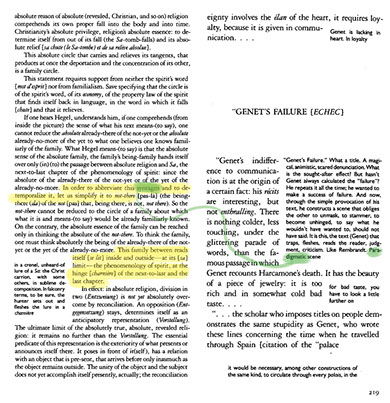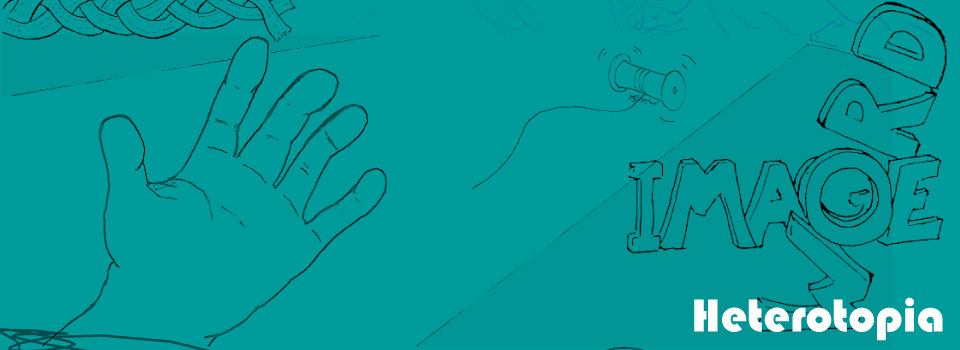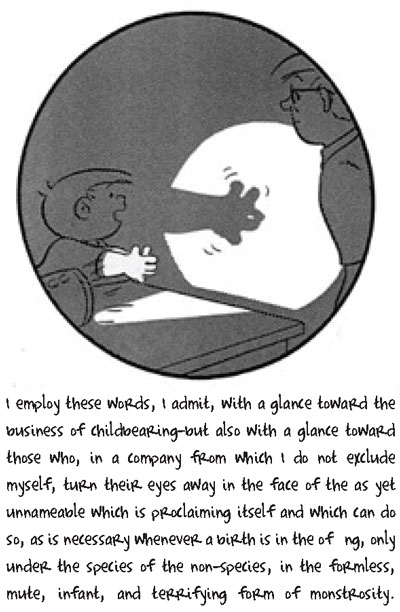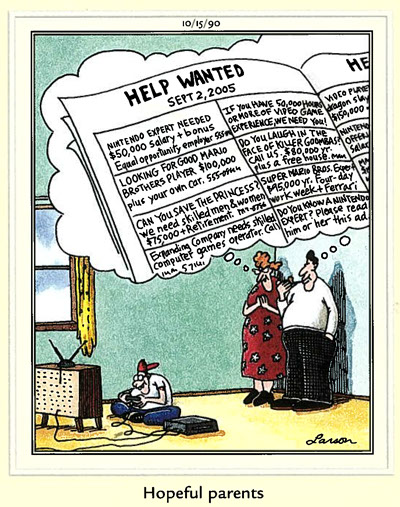
x
Contents
Home
Home
Home
Our investigation of image and text showed a complex relationship between fragmentation and coherence, exactly the relationship Jody Shipka depends on in Toward a Composition Made Whole:
What I find most useful about the definition of composition that Yancey offers is that it reminds us that a composition is, at once, a thing with parts—with visual-verbal or multimodal aspects—the expression of relationships and, perhaps most importantly, the result of complex, ongoing processes that are shaped by, and provide shape for, living. (17)
In this moment, Shipka points to a very subtle but important moment in composition. Right now, multimodal means combing visual and verbal modes. Throughout the rest of the book she resists this definition by providing examples that combine completely other modes (the ballet slippers used as a writing surface combine any number of modes including visual and verbal but also tactile, olfactory, and the proprioceptive sense of wearing). However, she does not offer a direct attack on the current dominance of visual and verbal modes. In fact, Yancey’s definition, to which Shipka refers, focuses on visual and verbal modes to the exclusion of others: “A composition is an expression of relationships—between parts and parts, between parts and whole, between the visual and the verbal, between text and context, between reader and composer, between what is intended and what is unpacked, between hope and realization. And, ultimately, between human beings” (“Looking” 100). In her list of heterotopic binaries, Yancey stresses coherence across fragmented elements. This would put her in the second category of Deleuzian dualisms: dualism as a way of getting to a truer monism. Thesis and antithesis dissolve quickly into a simple synthesis. Yancey could be read as embracing multiplicity to the extent that she allows these heterotopias to coexist in incommensurable difference—to the extent, that is, that she hesitates before coherence.
However, Yancey does not hesitate. Instead, she collapses visual and verbal modes into a verbal unity: “If we are to value this new composition—text that is created on the screen and that in finished form is also mediated by the screen—we will need to invent a new language that allows us to speak to new values” (90). Visual becomes verbal when we reduce multimodality to “language.” And among compositionists, that isn’t too shocking of an error. We teach writing. We see language everywhere. I am as guilty of it as Yancey, but I’m trying to learn to resist it in my own teaching and writing.
Lyotard produces the opposite error in deconstructing the discourse|figure binary by reducing discourse to figure. However, he is very clear that a figural foundation is illusory. He hesitates and finds the figural to be that act of hesitation. The figural is only foundational to the extent that it resists foundation, that it transgresses any of these lines we want to set up between our heterotopic binaries. Our challenge, then, will be to investigate these binaries, allowing them to bleed across the line and yet to remain incommensurable. Let’s continue by investigating the Visual|Verbal binary more closely.
By dividing our investigation of comics into visual and verbal modes, we are able to at once carry with us our mimetic/symbolic distinction and focus more clearly on what might be traditionally found at the core of multimodality. Looking at the previous Far Side example through this lens, we find that it breaks down a bit more neatly. The verbal describes the captions, word balloons, and even the newspaper text. The visual then describes both the depictions of the characters and the newspaper in the parents’ imagination. Just as soon as we have things neatly divided, though, they begin to disintegrate, or rather reintegrate into an uninterpretable aporia. Each verbal element acts visually as well. The words in the newspaper are handwritten, the font of the caption distinctive. Similarly, the visual elements slip unbidden into the position of verbal element by making themselves utterable, readable, describable.* In fact, it would be difficult to find any visual artifact that could not be reduced to the verbal. The opposite is only somewhat less true. The verbal can of course be spoken, not just written, and then could be devoid of visual elements (unless we consider lip-reading).
Just as we were unsure whether to classify a particular element as image or as text, we are now unsure how to stop oscillating between elements that are always already at once visual and verbal, seen and read. The Image|Text binary broke down because of undecidability of content; the Visual|Verbal binary breaks down because of undecidability of interpretation. Perhaps Derrida could provide us with more elaborate and convincing arguments about the spoken word’s written and therefore visual nature.
He might also provide us with another way of thinking of the verbal and the visual. This reading of Derrida as respecting the Visual|Verbal distinction is my penance for implying that he privileges discourse at the expense of figure. His Glas confronts readers with a text that is not purely linear. Glas features two parallel yet intersecting essays, one on G. W. F. Hegel and one on Jean Genet. Within each column, there are also peepholes of inset text peering out at the reader and across the gutter to the other essay. For the most part, the visual nature of Derrida’s text is owing to length. His Genet essay is shorter, and therefore its font is enlarged to allow it to fit, but this carries with it a supplement, namely that it allows the reader to more easily differentiate between essays. The essays repeatedly comment upon their own visual nature and reach across the aisle toward each other. Derrida mimics Genet’s formatting, attempting to evade a Hegelian synthesis through contraposition. Finally, the essays begin and end in midsentence, allowing us to begin again. But these rebeginnings need not set up two closed systems. Instead we might end the Genet essay with a half twist by beginning the Hegel essay, and vice versa, creating an infinite Mœbius strip of a text. The disjunctive bar dissipates into its “originary” libidinal band.
Visual|Verbal

like Rice's conglomerated elements?

Image of Glas 219.

Derrida Family Circus

While Derrida himself did not draw much, his older brother did. Derrida referred to a “fratricidal desire” that seized him when seeing his brother’s drawings:
I suffered seeing my brother's drawings on permanent display, religiously framed on the walls of every room. I tried my hand at imitating his copies: a pitiable awkwardness confirmed for me the double certainty of having been punished, deprived, cheated, but also, and because of this even, secretly chosen. (Memoirs 37)
His brother’s skill continued to haunt Derrida’s vision throughout his life:
For I have always experienced drawing as an infirmity, even worse, as a culpable infirmity, dare I say, an obscure punishment. A double infirmity: to this day I still think that I will never know either how to draw or how to look at a drawing. (36)
Sarah Wilson traces Derrida’s complicated relationship with images into his other books:
Painting, a “degenerate and superfluous expression” as it is called in “La Double Séance”, is subsumed in portraiture, a practice Derrida extravagantly, metonymically, immemorially, represented by the trope of blindness. (“Rembrandt” 212)
Wilson offers a fuller and more favorable examination of Derrida’s relationship with Valerio Adami and his paintings in The Visual World of French Theory: Figurations.
Derrida’s renunciation of the visual in favor of the textual both explains and indicts his writing. His family circus might reveal his juvenile longwindedness* as shadows and simulacra.
*an accusation that I realize could also be levied against me.
(Writing and Difference 293)


